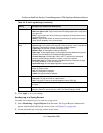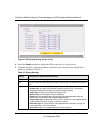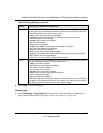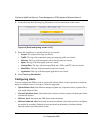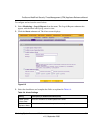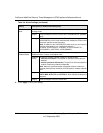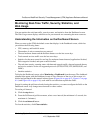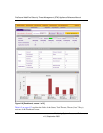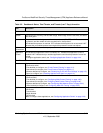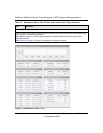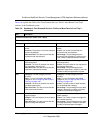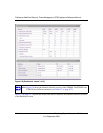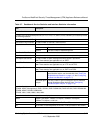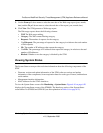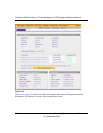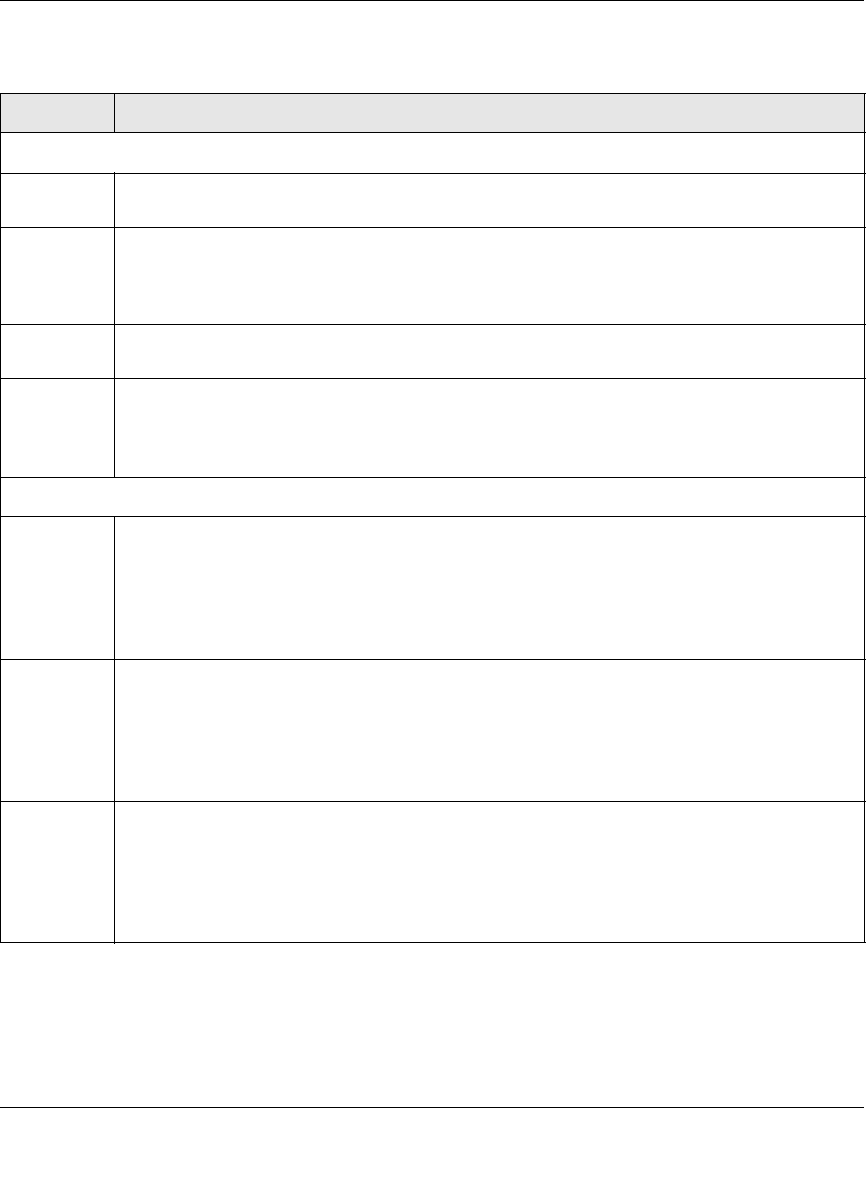
ProSecure Web/Email Security Threat Management (STM) Appliance Reference Manual
Monitoring System Access and Performance 6-13
v1.0, September 2009
Table 6-5. Dashboard: Status, Total Threats, and Threats (Last 7 Days) formation
Item Description
Status
System The current CPU, memory, and hard disk usage. When usage is within safe limits, the status
bars show green.
Services The protocols that are being scanned for malware threats. (ON, OFF, or HALT stated next to
the protocol) and the number of active connections for each protocol.
ON indicates that protocol is scanned. OFF indicates that the protocol is not scanned. HALT
indicates that you enabled protocol scanning but the protection license has expired.
Active
Connections
The number of active connection per protocol.
Application
Control
ON indicates that application control is enabled; OFF indicates that application control is
disabled. HALT indicates that you enabled application control but the protection license has
expired.
To configure application control, see “Configuring Application Control” on page 4-44.
Total Threats (Since Last Clear)
Email Displays the total number of:
• Scanned (e-mails).
• Files blocked (to configure, see “E-mail Content Filtering” on page 4-11).
• Quarantined (to configure, see “E-mail Content Filtering” on page 4-11).
• Malware detected (to configure, see “Customizing E-mail Anti-Virus Settings” on page 4-5).
• Spam (to configure, see “Protecting Against E-mail Spam” on page 4-14).
Web Displays the total number of:
• Scanned (files).
• Files blocked (to configure, see “Configuring Web Content Filtering” on page 4-26).
• Quarantined (to configure, see “Configuring Web Content Filtering” on page 4-26).
• Malware detected (to configure, see “Configuring Web Malware Scans” on page 4-24).
• URLs blocked (to configure, see “Configuring Web URL Filtering” on page 4-32).
Application Displays the total number of:
• IM blocked.
• Tools blocked.
• Media blocked.
• P2P blocked.
Note: To configure these applications, see “Configuring Application Control” on page 4-44)



